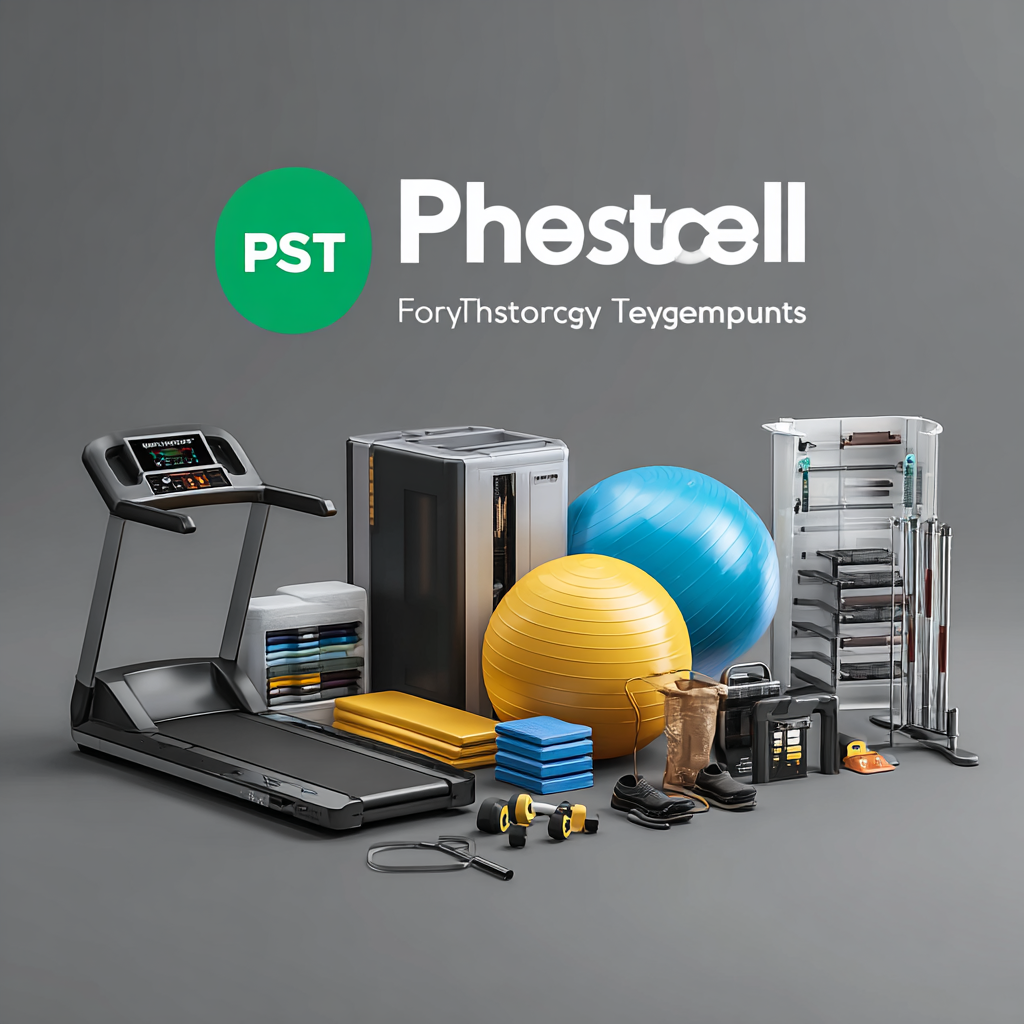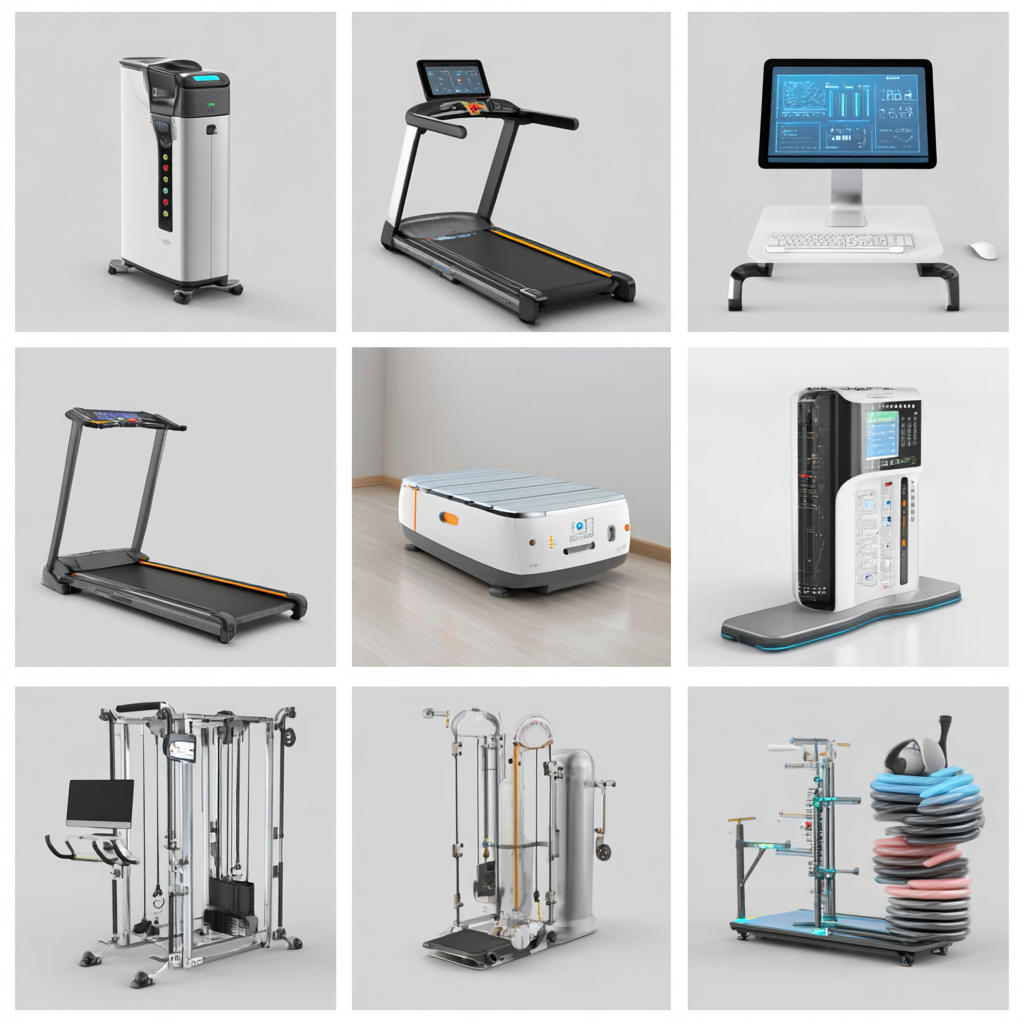Exploring the Future of Best Physical Therapy Equipments Trends in 2025
As the healthcare landscape continues to evolve, the demand for advanced Physical Therapy Equipments is projected to increase significantly by 2025. According to the Global Physical Therapy Equipment Market report, the industry is expected to grow at a compound annual growth rate (CAGR) of 7.8%, pointing to an urgent need for innovations in technology and design. One of the key factors driving this growth is the recognition of the importance of long-term rehabilitation, enhanced by effective after-sales services and reduced maintenance costs.

In an era where patient outcomes are paramount, stakeholders are increasingly focusing on how high-quality Physical Therapy Equipments can facilitate better recovery processes. As we explore the future trends in this domain, understanding the implications of after-sales support and maintenance strategies becomes essential for both manufacturers and healthcare providers aiming to improve operational efficiency and patient satisfaction.
Emerging Technologies Transforming Physical Therapy Equipment in 2025
The landscape of physical therapy equipment is undergoing a significant transformation, driven by emerging technologies that are redefining patient care. According to a recent report by Research and Markets, the global physical therapy equipment market is projected to reach $23.2 billion by 2025, growing at a compound annual growth rate (CAGR) of 7.4%. This growth is largely attributed to advancements in telehealth and smart devices that enhance the rehabilitation experience. As teletherapy becomes increasingly popular, equipment that integrates remote monitoring capabilities is now essential for therapists to provide personalized care from a distance.
Moreover, innovations in robotics and AI are playing a crucial role in improving rehabilitation outcomes. The World Health Organization reported that robotic-assisted therapy can accelerate recovery timelines by up to 30%, offering patients a more engaging and efficient rehabilitation process. In 2025, we expect to see a surge in equipment featuring AI-driven feedback mechanisms, enabling therapists to tailor programs to individual patient needs more effectively. As these technologies become more accessible, the future of physical therapy equipment promises to deliver enhanced efficiency and improved patient experiences, solidifying its place at the forefront of healthcare innovation.
Key Trends Shaping the Future of Patient Rehabilitation Tools
The landscape of physical therapy equipment is evolving rapidly, driven by advancements in technology and a shifting focus on patient-centered care. One of the most significant trends shaping the future of rehabilitation tools is the integration of virtual reality (VR) and augmented reality (AR) into treatment programs. These immersive technologies enable patients to engage in tailored exercises that simulate real-life scenarios, promoting greater motivation and adherence to rehabilitation protocols. By providing real-time feedback and a more interactive environment, VR and AR are revolutionizing how therapists approach recovery.
Another key trend is the development of wearable technologies that monitor patient progress in real-time. These devices, equipped with sensors, can track metrics such as movement range, muscle activity, and even heart rate. By analyzing this data, therapists can personalize treatment plans and make informed decisions to enhance recovery outcomes. Furthermore, the rise of tele-rehabilitation has made it possible for patients to receive guidance from their therapists remotely, ensuring continuity of care and expanding access to rehabilitation tools regardless of location. Collectively, these innovations are set to transform the future of physical therapy, making it more efficient, engaging, and accessible for patients.

The Role of Telehealth in Physical Therapy Equipment Advancements
The evolution of telehealth is profoundly impacting the landscape of physical therapy equipment, shaping how therapists and patients engage in treatment. With advancements in technology, telehealth solutions are enabling therapists to remotely monitor patients' progress, facilitating a more interactive and personalized approach to rehabilitation. Patients no longer need to be physically present in clinics to receive guidance, making it easier to maintain continuity of care, especially for those in rural or underserved areas.
Tip: To enhance your telehealth experience, ensure that your equipment is user-friendly and integrates seamlessly with communication platforms. Invest in devices that track your movements and progress, such as smart wearables or mobile applications tailored for physical therapy.
The rise of artificial intelligence and machine learning in telehealth is also revolutionizing the way therapists can evaluate a patient's condition. These tools can analyze a patient's performance in real-time, providing valuable insights that can lead to more effective treatment plans. Moreover, augmented reality (AR) and virtual reality (VR) technologies offer immersive experiences for patients, making exercises more engaging and effective.
Tip: When incorporating AR or VR into your physical therapy routine, start with guided sessions to familiarize yourself with the technology. Monitor your feedback and communicate with your therapist to adjust your program according to your comfort level and progress.
Sustainability and Eco-Friendly Innovations in Physical Therapy Gear
As we look towards 2025, the intersection of sustainability and the physical therapy industry is becoming increasingly significant. A growing number of practitioners are recognizing the need to adopt eco-friendly materials and practices in their treatment approaches. According to a report by MarketsandMarkets, the global physical therapy equipment market is anticipated to reach $22.80 billion by 2025, with innovations in sustainable products playing a crucial role in that growth. The push for greener alternatives not only aligns with global sustainability goals but also meets the rising consumer demand for environmentally conscious choices.
**Tip:** When selecting physical therapy equipment, consider products made from recycled or biodegradable materials. This not only reduces environmental impact but can also enhance patient satisfaction as more individuals are looking to support eco-friendly brands.
Furthermore, advancements in technology are leading to the design of equipment that minimizes energy consumption and waste. Innovations such as energy-efficient modalities and software solutions that optimize resource use are becoming commonplace. A recent study highlighted that facilities implementing sustainable practices reported a 20% reduction in operational costs, showcasing the financial benefits alongside environmental responsibility.
**Tip:** Engage with suppliers who prioritize sustainability in their product lines. Building relationships with these providers can ensure that your practice remains at the forefront of eco-friendly practices while also promoting health and well-being.
Exploring the Future of Best Physical Therapy Equipments Trends in 2025 - Sustainability and Eco-Friendly Innovations in Physical Therapy Gear
| Equipment Type | Eco-Friendly Materials | Sustainability Features | Expected Market Growth (%) |
|---|---|---|---|
| Resistance Bands | Natural latex | Reusable and recyclable | 15% |
| Foam Rollers | Recycled foam | Biodegradable | 10% |
| Therapy Balls | Bamboo fiber | Made from renewable resources | 12% |
| Ultrasound Therapy Machines | Environmentally friendly components | Energy-efficient | 20% |
| Walking Aids | Aluminum and recycled plastics | Durable and recyclable | 8% |
Predicted Market Growth and Opportunities in Physical Therapy Equipment Sector by 2025
As we look ahead to 2025, the physical therapy equipment sector is poised for significant market growth, driven by an increasing demand for rehabilitation services and advancements in technology. The aging population and higher prevalence of chronic conditions are key factors fueling this demand. As healthcare systems evolve, physical therapy practices are incorporating more innovative equipment designed to enhance patient outcomes and streamline treatment processes.
Opportunities abound for manufacturers and service providers ready to adapt to these trends. Smart devices integrated with telehealth capabilities are expected to gain traction, enabling therapists to monitor progress remotely and offer personalized care plans. Moreover, the rise of rehabilitation robotics and wearable technology is set to transform traditional therapy methods, providing both patients and therapists with enhanced techniques and data analytics. The confluence of these advancements will not only promote better recovery rates but also create a more efficient healthcare landscape, emphasizing the immense potential within the physical therapy equipment market by 2025.

